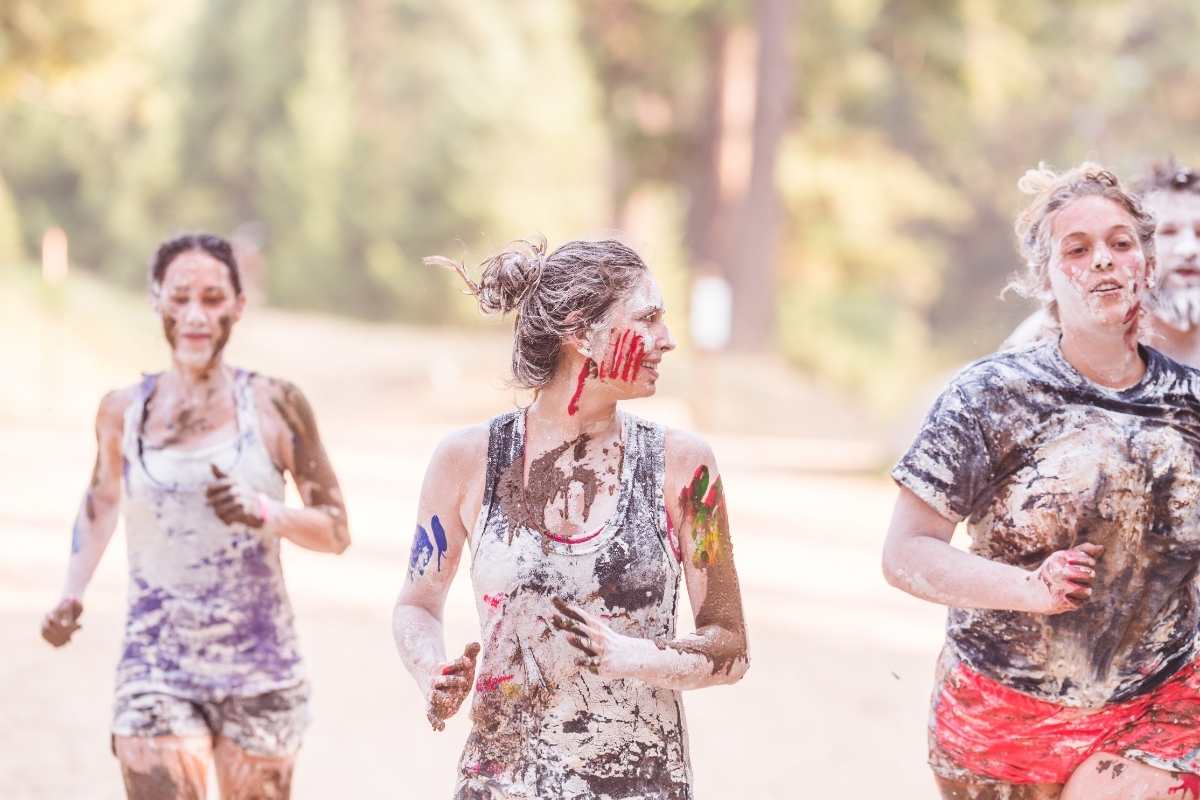Are Mud Runs Safe? 5 Real Dangers Of Mud Runs And How To Prevent Them

Mud runs like Tough Mudder have grown in popularity over the years, with many who have grown bored with their regular exercise routine, flocking to enter these fun, but intense races.
Mud runs are CHALLENGING racecourses, where participants need to crawl, leap, and climb through intense obstacle courses filled with mud, cargo nets, and all kinds of obstacles.
While these races are fun and attract participants from all fitness levels and experiences, there are potential health and safety risks people need to be aware of.
In essence, many mud runs like Tough Mudder are team sports. The team helps to reduce the risk as the participants help each other. But you don’t have to have a team, you can participate in a Tough Mudder alone.
Risk Factors
In earlier years, mud runs like Tough Mudder have received some negative press due to participants getting injured and dying.
For example:
- In 2013, a person drowned. Heart attacks, hypothermia, orthopedic injuries, and head injuries sent 20 patients to the hospital.
- 38 patients were hospitalized for broken bones, dislocations, head injuries, and other orthopedic injuries during another race weekend.
Obstacle course races are not alone in this regard.
In triathlon races, drowning deaths have also been reported. It is not uncommon for runners to suffer injuries during marathons and other competitive events.
These races often lead individuals to compete without proper preparation due to their atmosphere. Preexisting health problems can make this situation even more difficult.
- Compared to marathons, mud runs are 3-15 times more dangerous (depending on the data you look at).
- Conversely, your absolute risk of injury is relatively low.
- Approximately 6 out of every 1000 obstacle race participants end up in the doctor’s care.
This article is going to discuss the 5 dangers of these mud runs, and what you can do to stay fit and well when participating in these courses.
1. Injuries
The most common and obvious risk is injuries. This is the most likely thing that can happen when taking part in a mud run, no matter what your experience level is.
As mentioned above, the terrain in these races is filled with mud, nets, and anything you can imagine, so slipping and tripping are very common.
These races make you more susceptible to sprains or fractures.
Wearing protective gear such as knee pads and elbow pads will also ensure your safety, especially if you were to fall from a certain height.
There are a few things you can do to MINIMIZE this risk:
1. Always wear trail running sneakers. Not wearing the right shoes can cause you to slip and trip, which is when accidents happen, and slipping on obstacles and dirt is very common.
By wearing the appropriate shoes, such as trail running sneakers, you’ll have a better grip and balance, reducing your chances of falling over.
2. Warm-up appropriately. Warming up is a way to minimize your chances of getting injured. You should stretch every part of your body before the race and also during.
3. Take breaks. These courses are pretty long, so you’ll want to take small breaks in between.
During these breaks, stretch out your body again, even if you feel you don’t need to. This will reduce your chances of injury.
2. Exhaustion/Dehydration
Even if you’re an experienced athlete with high fitness levels, if you’ve never run through a mud run before, you’ll be surprised at how quickly dehydration and exhaustion can hit you.
These races are long and intense, so exhaustion and dehydration are very common. If you’re a beginner, it is advised that you take frequent breaks along the course.
Hydration is key. Courses will have water stations available for participants during the event.
In most races, carrying your own hydration pack may not be necessary. However, it is nice to have your own instead of relying on the organizer’s stations in hot weather.
Not to mention you will be able to carry some energy gels or bars plus some other small items.

As mentioned earlier, these courses are very long, so taking breaks is crucial – we can assure you that you won’t be the only one!
If you’re taking part in this event when it’s sunny and hot, wear a hat and try your best to choose areas that are shaded when you are running.
When you decide to take breaks, make sure to stop in a shaded area.
Another thing that will save you when it comes to dehydration and exhaustion is a hydration pack. These are small backpacks that can be filled with water.
They contain a straw attached to the harness that can be stuck to it, so you can drink whenever you want throughout the race!
3. Diseases
This is something that many people forget about when it comes to mud runs.
Imagine having an open wound, and splashing around in dirty water or dirty mud, along with hundreds of other bodies (some of which may have open wounds too).
That water and mud are bursting with harmful bacteria. If any of that gets into an open scab, wound, or even your mouth, you’d be at risk of catching diseases. They can give you some unpleasant symptoms like diarrhea, and vomiting.
To prevent this, always make sure any scabs or wounds are completely covered with a waterproof band-aid.
This will prevent any unwanted substances from coming into contact with it, reducing the chance of infection.
You should also keep rubbing alcohol or hydrogen peroxide in your hydration pack, in case any scabs come into contact with dirty water or mud.
You should also make sure to keep your mouth completely closed when running through these areas. If any dirty water gets into your mouth, rinse it out immediately with clean water.
Should any of the above happen, a strong immune system will lessen the symptoms of any infection.
Therefore, in the months leading up to your race, make sure you are getting enough vitamin C in your diet, as well as ginger and garlic.
These will really strengthen your immune system ahead of the big day!
4. Losing Expensive Equipment
These races are full of fun, and if you’re participating with your friends or family, you may want to capture all the funny moments (and falls!).
Many people take along their favorite Go Pros and cameras to these events, so they can document them.
However, there may be times when you trip, causing you to break your device, or you may even lose it underwater or in the murky mud.
It is important to make sure that these devices are safely and securely strapped onto your body somehow.
However, you must be mindful of your safety first, so if it does fall off, finish the race (this will avoid collisions), and when you’re finished you can go back and pick it up.
5. Death
While death is very rare in a mud run, if certain safety precautions are not met, it can happen. This is more likely to happen in more advanced courses.
Obstacles are big risks. There are always supervisors nearby in case anyone needs assistance (but they might not be able to observe all the participants).
Even if you are a good swimmer, it is totally different to swim with your muddy shoes and clothes on.
It is important to not push yourself or rush too much. Take each obstacle slowly. If it has been raining, be mindful that the course will be harder, so take your time and watch your footing.
Heatstroke is a risk too. You should pay attention to the heat index, which is the ratio of temperature to humidity.
Keep an eye on the temperature as well. You’re more likely to experience cramps or heat exhaustion at 90 degrees. It is possible to suffer from full-blown heatstroke at 105 degrees.
Doing smaller races regularly will also prepare you for taking part in the bigger, advanced ones if that is your goal.
The Bottom Line
Millions and millions of Americans have participated in different obstacle course races like Tough Mudder.
While there are dangers to mud runs, being mindful of them and taking precautions will guarantee your safety.
Happy running!






